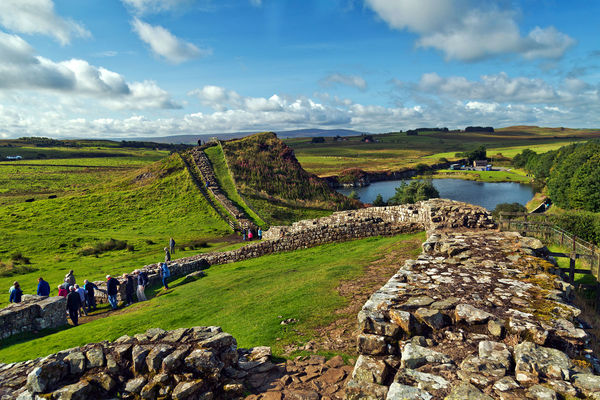Europe’s Wall-to-Wall History
By Rick Steves

Though many impressive walls have played an enormous role in Europe's past, today most are historical relics. From Hadrian's Wall (constructed to defend the northern boundary of Roman Britannia) to the Maginot Line (built by the French in the 1930s to keep out the Germans), Europe's walls have generally been symbols not of strength, but of mistrust and insecurity. Most were necessary when built. But the promising news in our age has been a European society that is advancing toward mutual respect and cooperation — dismantling walls so that it can move forward.
Long ago, at one point or another, most of Europe's great cities — Paris, London, Rome, Florence, Milan, Barcelona, Vienna, and many more — were contained within walls, constructed during ancient and medieval times to defend against invaders. Most of these walls were torn down long ago as cities expanded beyond their historic centers; in many cases, the wall's demolition opened up land for what are now grand circular boulevards. Some intact walls have been preserved in places like Dubrovnik (Croatia), Rothenburg ob der Tauber (Germany), Lucca (Italy), York (England), and Carcassonne (France). In each of these cities, their old walls have become people-friendly, park-like spaces where people stroll, gather, and enjoy the view.
Some walls seem to survive to take us back in time. One of my favorites, Hadrian's Wall, is the remains of a fortification the occupying Romans built nearly 2,000 years ago in Britain. Now in ruins, this great stone wall once stretched 73 miles from coast to coast across the narrowest part of northern England, where Britannia stopped and the barbarian land that would someday be Scotland began.
More than just a wall, it was a cleverly designed military rampart manned by 20,000 troops. At every mile there was a small fort guarding a gate. On each visit I try to imagine the bleakness of being a young Roman soldier stationed there, 18 centuries ago. Today, two of these forts are now museums, where visitors can see the ruins up close, view ancient artifacts, and get a sense of life in the distant past in this once-desolate corner of the Roman Empire.
Hadrian's Wall is much-loved by hikers, who follow the wall as it meanders up and down the natural contours of the land. For years, I never ventured beyond the museums and car-park viewpoints. But on a more recent visit, I finally made time on a sunny late afternoon to hike the wall. Scrambling along Roman ruins, all alone with the wind and the sheep, I took a moment to absorb the setting, surveying vast expanses from a rocky crag that seemed to rip across the island like some horrific geological violence frozen in mid-action.
But Europe's most poignant walls are products of the recent past. Thankfully, so many that once stood for fear and intolerance now symbolize peace and progress.
During the Troubles — the 30-year conflict that wracked Northern Ireland — so-called "peace walls" went up all over Belfast to separate its sectarian communities — Catholics, in favor of a united Ireland, and Protestants, in favor of staying in the United Kingdom. Today, instead of separating its warring tribes, these walls are a tourist attraction. Visitors from around the world decorate the walls with colorful messages of hope and thanksgiving that the bombs and killing that came with the Troubles are no more.
Europe's most famous wall is the Berlin Wall, designed not to defend against invaders but to keep residents from escaping. Built in 1961, this 96-mile-long barrier encircled West Berlin, making it an island of freedom in communist East Germany. When the wall fell on November 9, 1989, Europe enjoyed its happiest day since the end of World War II. In the euphoria that followed, "wall peckers" giddily chipped the Berlin Wall to smithereens.
A surviving stretch of the wall has been preserved as a memorial to the victims of the Cold War. It forms a long, narrow park featuring a museum and observation tower from which you can peer down into a preserved, complete section of the Wall's multiple barricades, including the notorious "death strip" with a deadly obstacle course of barbed wire and tire spikes. Where this death strip once extended is now dotted with personal memorials and informational displays — the no-man's-land between East and West is now an everyman's land. And what's left of the long-hated wall has become a concrete canvas for graffiti artists — a people's gallery celebrating freedom.
Europe's walls were built for a reason. But, as travelers learn, the true success of a society lies in finding a way beyond walls. It's no accident that in today's Europe, with a diverse citizenry still working to come together, the euro's paper bills feature bridges, not walls — as do the dreams of great leaders.

